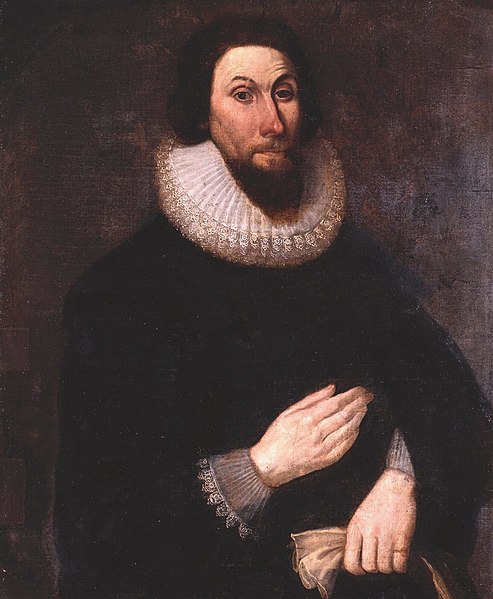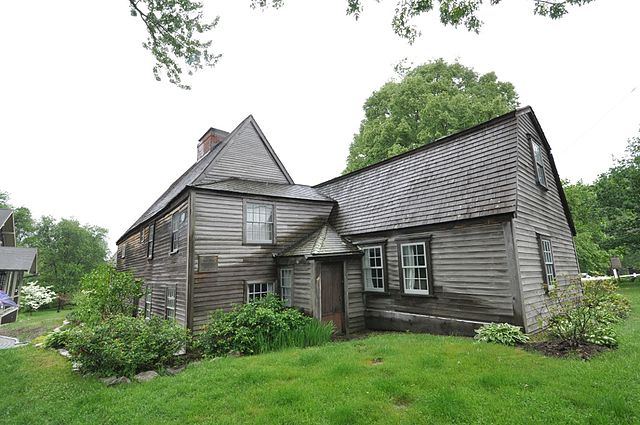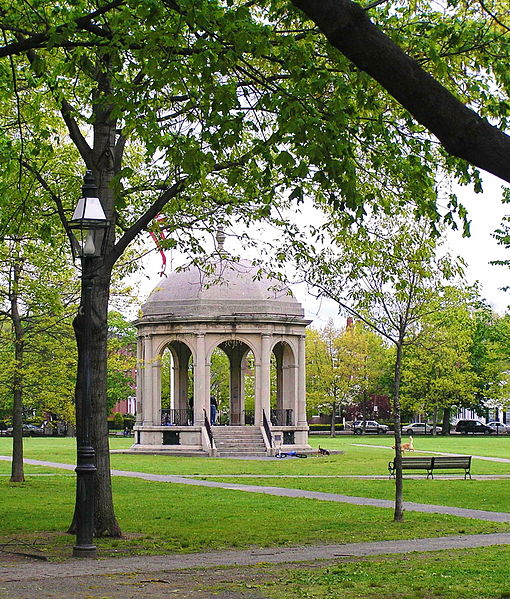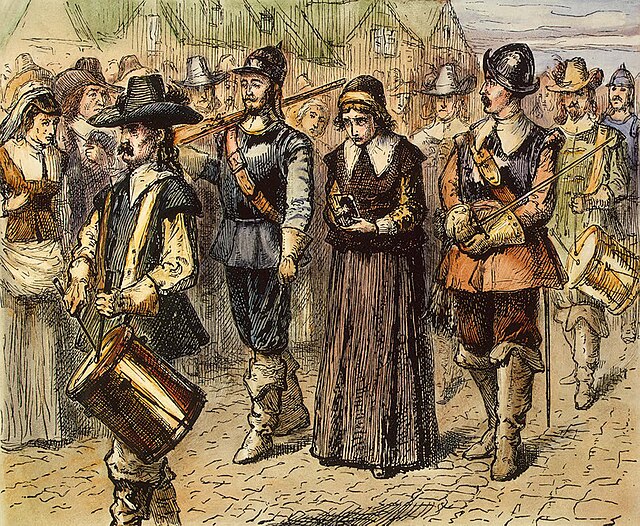John Cotton was a clergyman in England and the American colonies, and was considered the preeminent minister and theologian of the Massachusetts Bay Colony. He studied for five years at Trinity College, Cambridge, and nine years at Emmanuel College, Cambridge. He had already built a reputation as a scholar and outstanding preacher when he accepted the position of minister at St. Botolph's Church, Boston, in Lincolnshire, in 1612.
Portrait by John Smibert originally identified as John Cotton. It is now thought it is probably another member of the Cotton family.
Plaque on the Old Grammar School, Derby
Cotton was an undergraduate at Trinity College, Cambridge
Richard Sibbes was Cotton's spiritual counselor.
The Massachusetts Bay Colony (1628–1691), more formally the Colony of Massachusetts Bay, was an English settlement on the east coast of North America around the Massachusetts Bay, one of the several colonies later reorganized as the Province of Massachusetts Bay. The lands of the settlement were in southern New England, with initial settlements on two natural harbors and surrounding land about 15.4 miles (24.8 km) apart—the areas around Salem and Boston, north of the previously established Plymouth Colony. The territory nominally administered by the Massachusetts Bay Colony covered much of central New England, including portions of Massachusetts, Maine, New Hampshire, and Connecticut.
John Winthrop, who led the first large wave of colonists from England in 1630 and served as governor for 12 of the colony's first 20 years
Constructed in 1641, the Fairbanks House is a First Period home with clapboard siding
Salem Common was established as a village green in 1667
Quaker Mary Dyer was hanged on Boston Common in 1660








